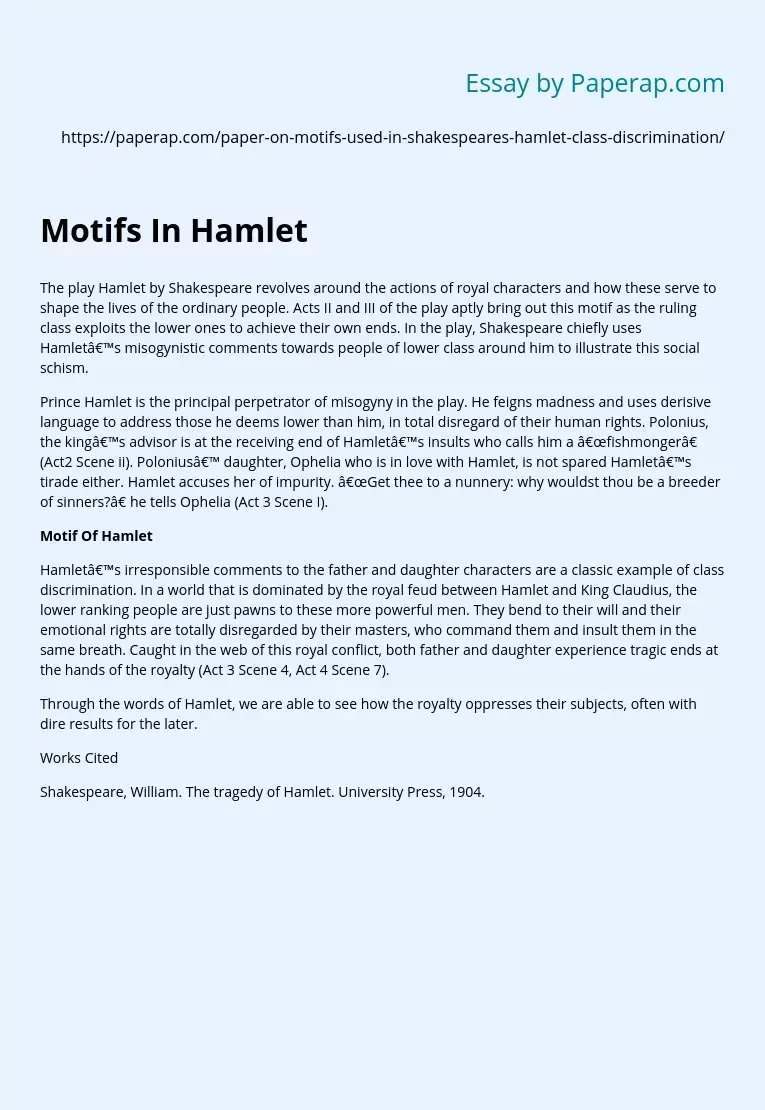Motifs In Hamlet
The play Hamlet by Shakespeare revolves around the actions of royal characters and how these serve to shape the lives of the ordinary people. Acts II and III of the play aptly bring out this motif as the ruling class exploits the lower ones to achieve their own ends. In the play, Shakespeare chiefly uses Hamlet’s misogynistic comments towards people of lower class around him to illustrate this social schism.
Prince Hamlet is the principal perpetrator of misogyny in the play.
He feigns madness and uses derisive language to address those he deems lower than him, in total disregard of their human rights. Polonius, the king’s advisor is at the receiving end of Hamlet’s insults who calls him a “fishmonger” (Act2 Scene ii). Polonius’ daughter, Ophelia who is in love with Hamlet, is not spared Hamlet’s tirade either. Hamlet accuses her of impurity. “Get thee to a nunnery: why wouldst thou be a breeder of sinners?” he tells Ophelia (Act 3 Scene I).
Motif Of Hamlet
Hamlet’s irresponsible comments to the father and daughter characters are a classic example of class discrimination. In a world that is dominated by the royal feud between Hamlet and King Claudius, the lower ranking people are just pawns to these more powerful men. They bend to their will and their emotional rights are totally disregarded by their masters, who command them and insult them in the same breath. Caught in the web of this royal conflict, both father and daughter experience tragic ends at the hands of the royalty (Act 3 Scene 4, Act 4 Scene 7).
Through the words of Hamlet, we are able to see how the royalty oppresses their subjects, often with dire results for the later.
Works Cited
Shakespeare, William. The tragedy of Hamlet. University Press, 1904.
Motifs In Hamlet. (2019, Dec 05). Retrieved from https://paperap.com/paper-on-motifs-used-in-shakespeares-hamlet-class-discrimination/

